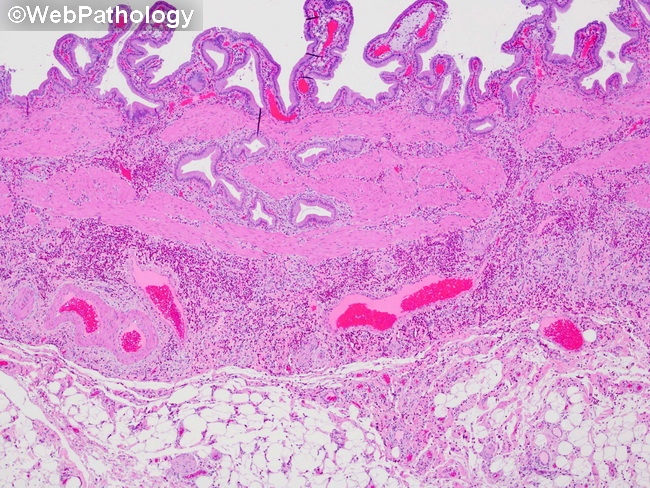Eosinophilic Cholecystitis


Comments:
Eosinophilic Cholecystitis: Chronic acalculous cholecystitis has a higher proportion of eosinophils in the inflammatory infiltrate than in patients with gallstones. When eosinophils comprise > 50% of the inflammatory cells, the term lymphoeosinophilic cholecystitis is applied. The underlying pathogenesis is thought to be presence of abnormal bile contents or hepatic metabolites that provoke hypersensitivity response. When the inflammatory response consists exclusively of eosinophils, the term eosinophilic cholecystitis is used. This image is an example of eosinophilic cholecystitis. Even at this low magnification, the inflammatory cells can be recognized as eosinophils. The inflammation extends into subserosal fat. Note the Rokitansky-Aschoff sinuses.Image courtesy of: Dr. Abdul Haleem; used with permission



